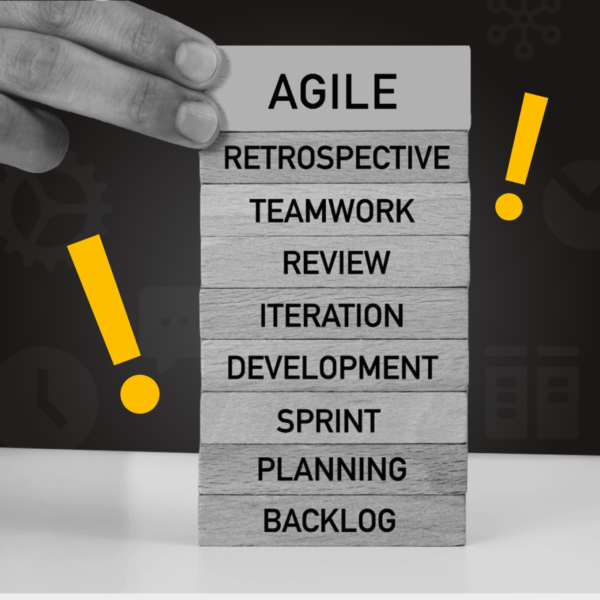In the ever-evolving world of User Experience (UX) design, agility has become the name of the game. Agile working methodologies have gained significant popularity, enabling UX teams to adapt, innovate, and deliver exceptional experiences in a fast-paced digital landscape. In this fun and insightful blog, we’ll embark on an agile adventure, exploring its origin, methodology, usage in the industry, current trends, and relevance in today’s UX landscape. So, buckle up and get ready to embrace the agile way!
The Origins of Agile
Our agile journey begins in the realm of software development, where the Agile Manifesto was born in 2001. Frustrated by traditional, rigid development processes, a group of software professionals came together to promote a more flexible and collaborative approach. Agile values individuals and interactions, working solutions, customer collaboration, and responding to change.

The Agile Methodology in UX
Agile working in UX is all about breaking down projects into smaller, iterative cycles, known as sprints. Here’s a breakdown of the key components:
a) Cross-Functional Teams:
Agile teams consist of professionals from different disciplines, including designers, developers, product managers, and stakeholders. This diverse mix fosters collaboration, communication, and shared accountability.
b) User-Centric Focus:
Agile UX teams prioritize user research and feedback. They aim to iterate and refine designs based on user needs, ensuring that the final product is aligned with user expectations and drives positive experiences.
c) Iterative Design:
Agile teams follow an iterative design process, creating and testing prototypes at various stages. This iterative approach allows for flexibility, adaptation, and continuous improvement based on user feedback.
d) Scrum Framework:
Many UX teams adopt the Scrum framework within the Agile methodology. It involves short, time-boxed sprints, daily stand-up meetings, backlog prioritization, and sprint reviews, enabling efficient coordination and progress tracking.
Agile Usage in the Industry
The Agile methodology has found widespread adoption in the UX industry, driving innovation and collaboration. It empowers teams to respond to changing user needs, market trends, and technological advancements. By embracing agility, UX professionals can deliver value in shorter cycles, gather actionable insights, and adapt their designs iteratively.
1. Spotify
Spotify, a leading music streaming platform, embraces Agile methodologies to foster innovation and continuous improvement. They employ cross-functional teams known as “squads” that work together to develop features and enhance the user experience. Each squad follows the Scrum framework, consisting of sprints, daily stand-up meetings, and sprint reviews. This Agile approach enables Spotify to respond swiftly to market demands, iterate on features, and deliver a personalized music experience to millions of users worldwide.
2. Google Ventures (GV)
GV, the venture capital arm of Alphabet Inc. (Google’s parent company), utilizes Agile methodologies in their design and product development initiatives. They embrace the concept of design sprints, a five-day process that allows teams to ideate, prototype, and test ideas rapidly. By condensing the design process into a short timeframe, GV can validate concepts and gather user feedback early on, saving time and resources while ensuring they build products that resonate with users.
3. IBM Design Thinking
IBM, a multinational technology company, incorporates Agile principles within its design thinking framework. IBM Design Thinking encourages cross-functional collaboration, rapid prototyping, and user-centric design iterations. By adopting an Agile mindset, IBM empowers its designers to iterate on ideas, incorporate feedback, and co-create with clients, resulting in innovative solutions that align with user expectations and business goals.
By embracing agility, these companies can respond to user feedback, stay ahead of market trends, and continuously enhance their products and services to meet evolving customer needs.
Current Trends in Agile Working
a) Remote Collaboration
The recent shift to remote work has led to an increased emphasis on remote collaboration tools and practices within Agile UX. Virtual whiteboards, video conferencing, and project management software enable seamless communication and coordination across distributed teams.
b) Design Sprints
Design sprints, inspired by Agile principles, have gained popularity as a time-bound, intensive approach to tackling design challenges. These focused workshops enable cross-functional teams to ideate, prototype, and validate ideas quickly, reducing time to market.
Agile’s Relevance in Today’s UX Landscape
Agile working remains highly relevant in the UX industry due to its inherent flexibility and adaptability. In a rapidly evolving digital landscape, where user expectations and market dynamics change swiftly, the ability to iterate, test, and refine designs becomes paramount. Agile methodologies empower UX teams to pivot, experiment, and deliver impactful experiences in a responsive and timely manner.

Conclusion
As the UX landscape continues to evolve, embracing Agile working methodologies is a powerful way to unlock creativity, collaboration, and flexibility. Agile enables UX teams to iterate, gather feedback, and adapt designs based on user needs, driving the creation of meaningful and delightful experiences. In today’s fast-paced digital era, where change is constant, the Agile approach empowers UX professionals to stay ahead of the curve, delivering impactful solutions that resonate with users. So, join the agile adventure and dance to the rhythm.

Leave a Reply